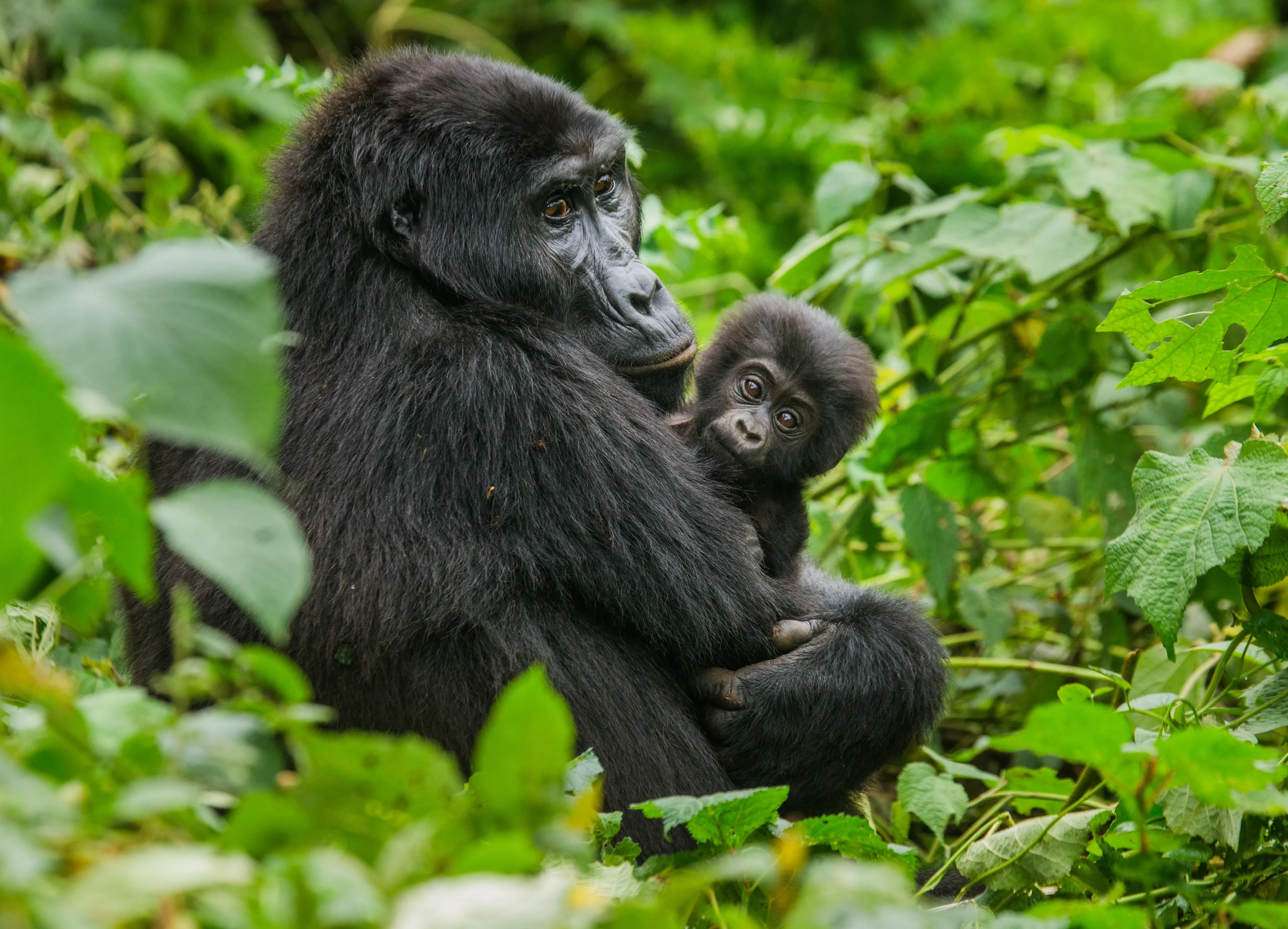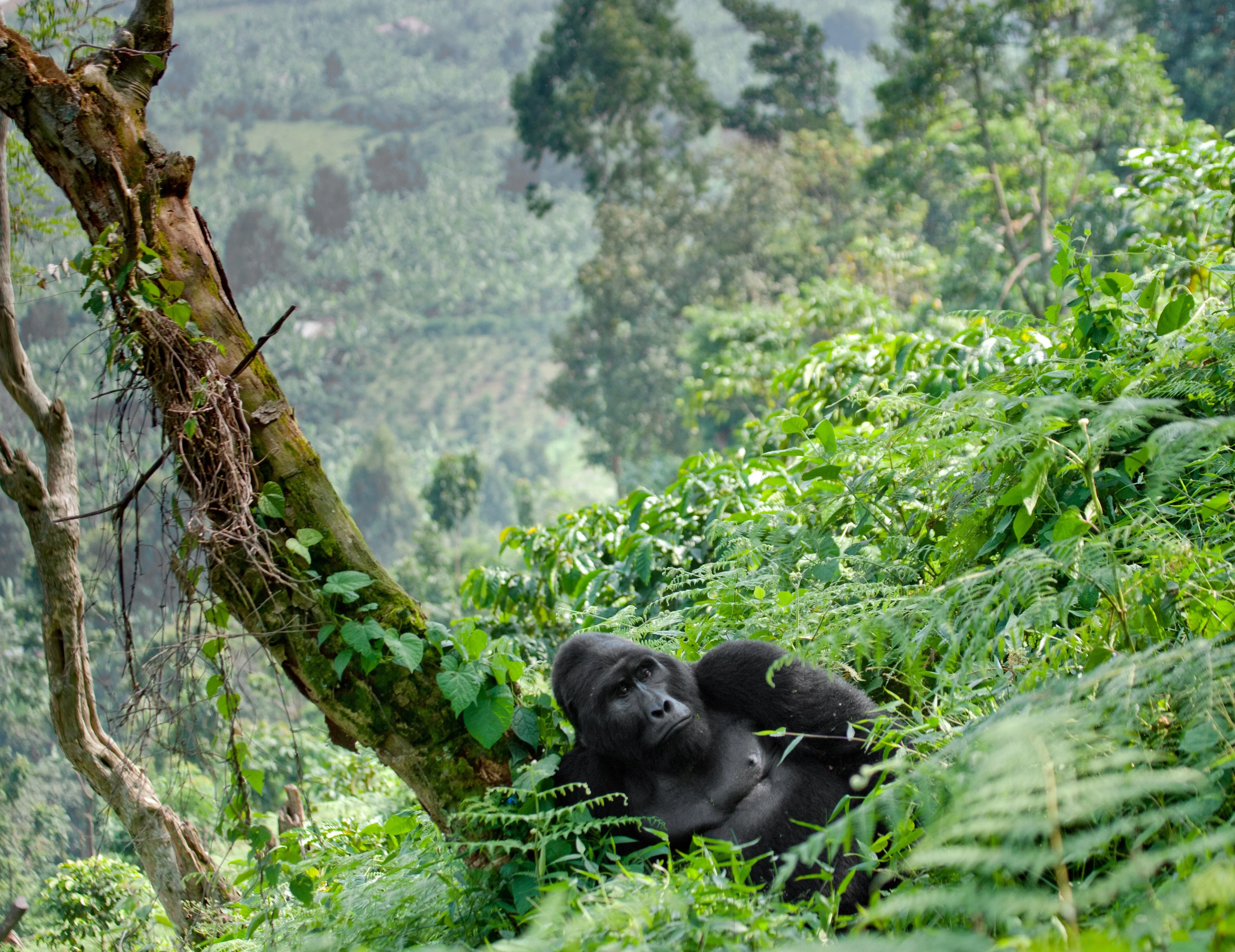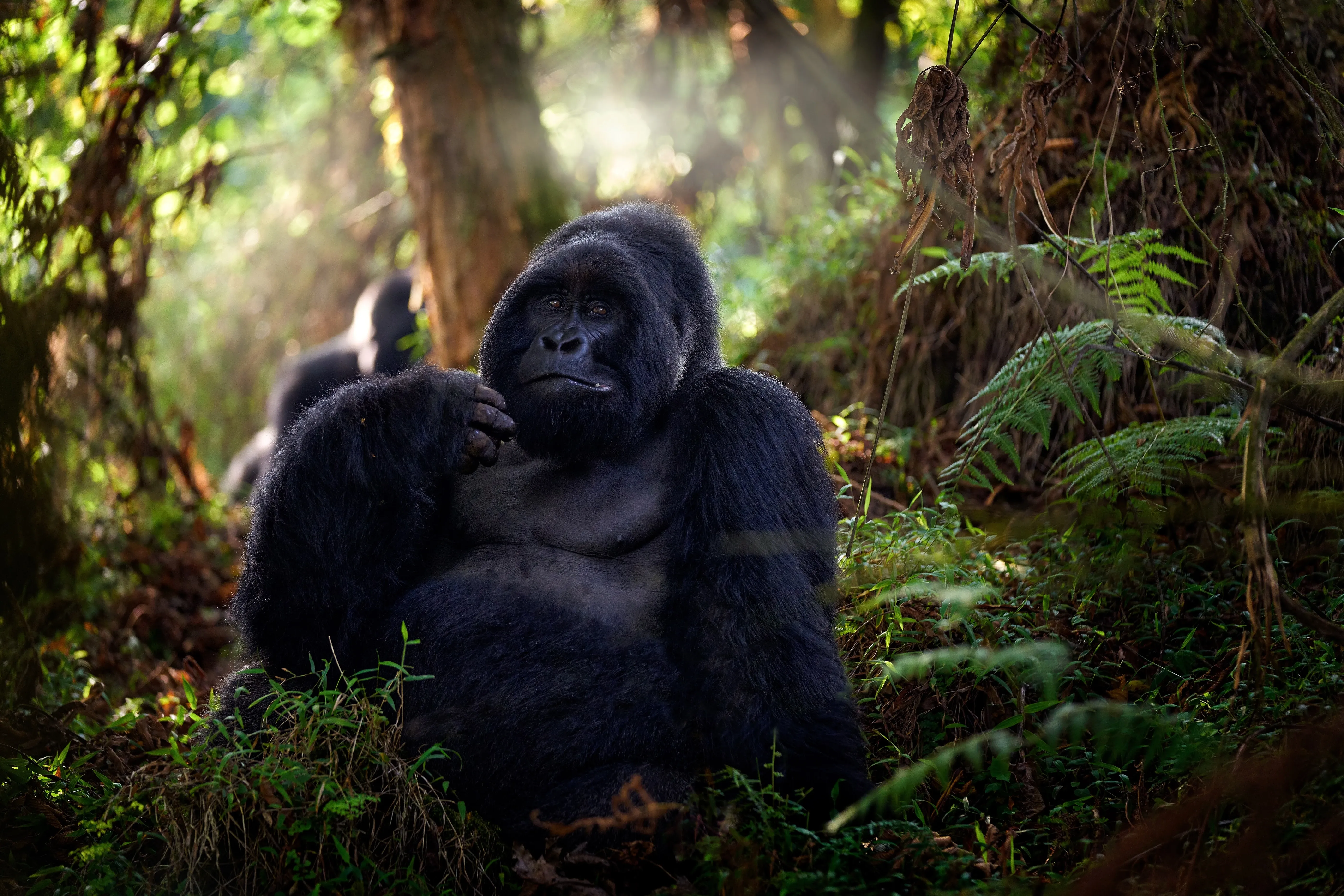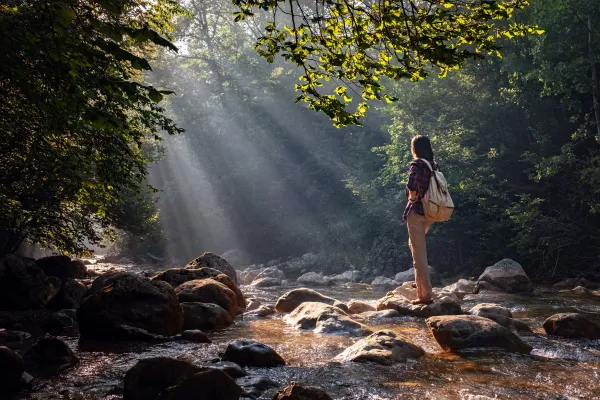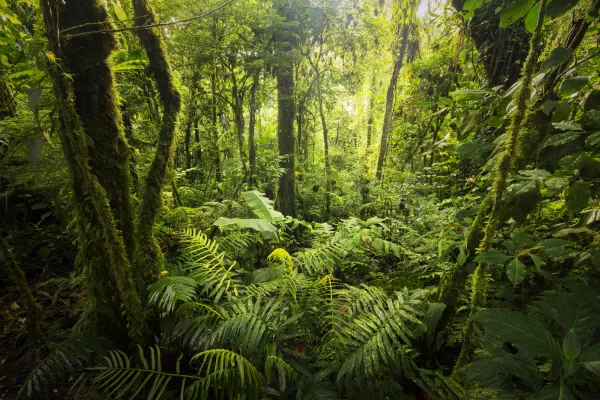A journey into mountain gorilla tourism
Wild gorilla tourism offers the unique and profound experience for visitors to encounter gorillas living in their natural African rainforest habitat. This magical encounter is a truly once in a lifetime opportunity, and it is available to everybody – for a price.
There are only around 1,000 mountain gorillas left on the planet, and they are all living in the wild. Trekking into the great ape’s natural habitat with an experienced guide is, therefore, the only way to experience these remarkable creatures in the flesh. But is this form of gorilla tourism responsible? Let’s look at the ethical considerations around wild gorilla encounters.
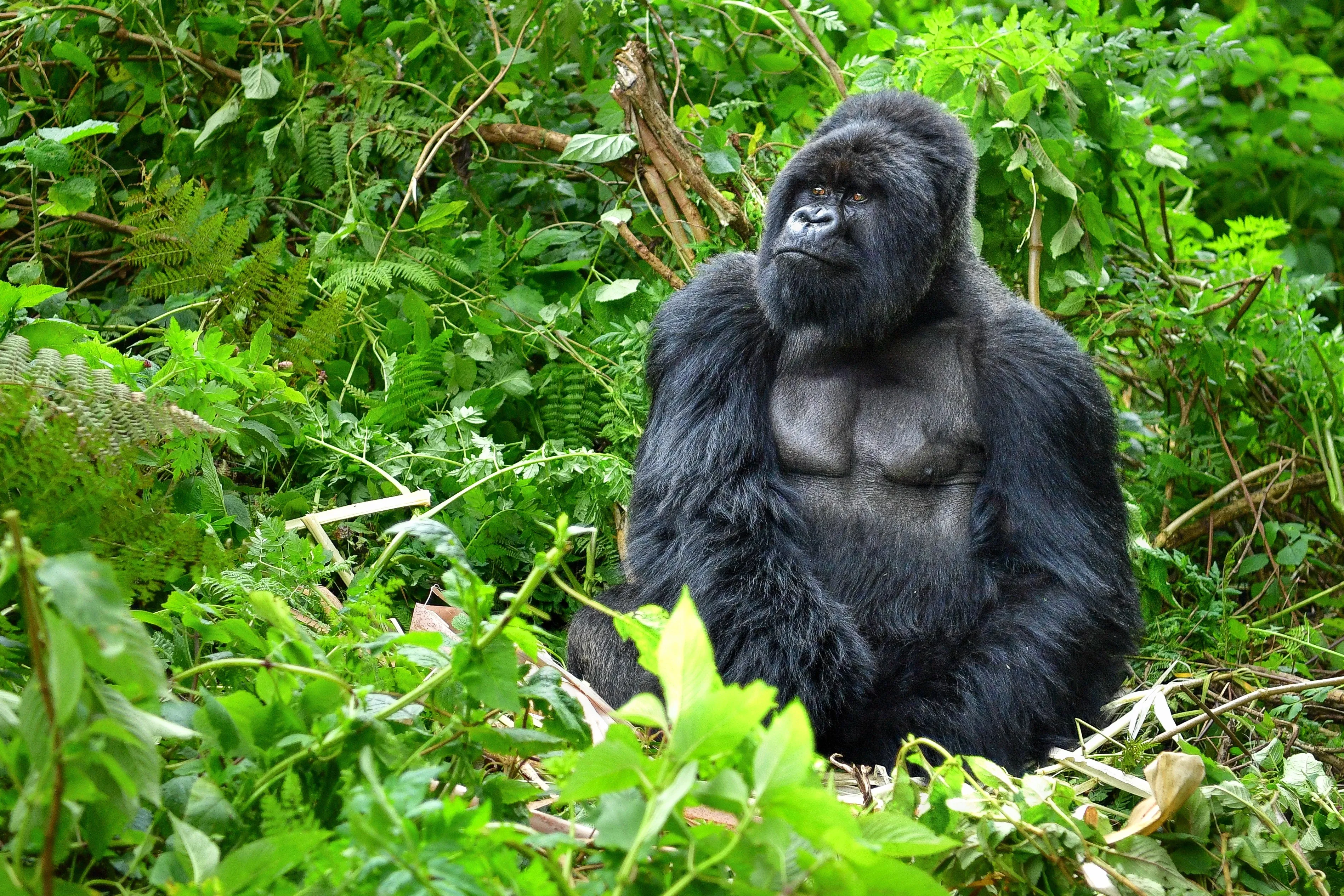
The mountain gorilla’s conservation challenges
There are two species of gorilla – the eastern gorilla and the western gorilla – and four subspecies (two belonging to each species). The mountain gorilla is a subspecies of eastern gorilla, which can be found in Rwanda, Uganda and the Democratic Republic of Congo. The gorillas live at higher elevations than their lowland cousins in mixed forests, bamboo forests and subalpine grasslands.
The mountain gorilla is Critically Endangered. The subspecies has been under threat from humans for decades and in the 1980s, it was estimated that there were only around 400 individuals left worldwide. The destruction of the gorilla’s forest home has been the main threat. Huge swathes of afromontane forest have been cleared for the growing human population to use for agriculture and other natural resources, like fire wood.
Poaching has also been a significant issue in the past, with many mountain gorillas killed by scientists and trophy hunters when the subspecies was first discovered. Young gorillas have been taken for the live animal trade, too – but no mountain gorillas have survived in captivity. It is rare for gorillas to be poached today, though they are sometimes caught in traps laid for other animals, like antelopes.
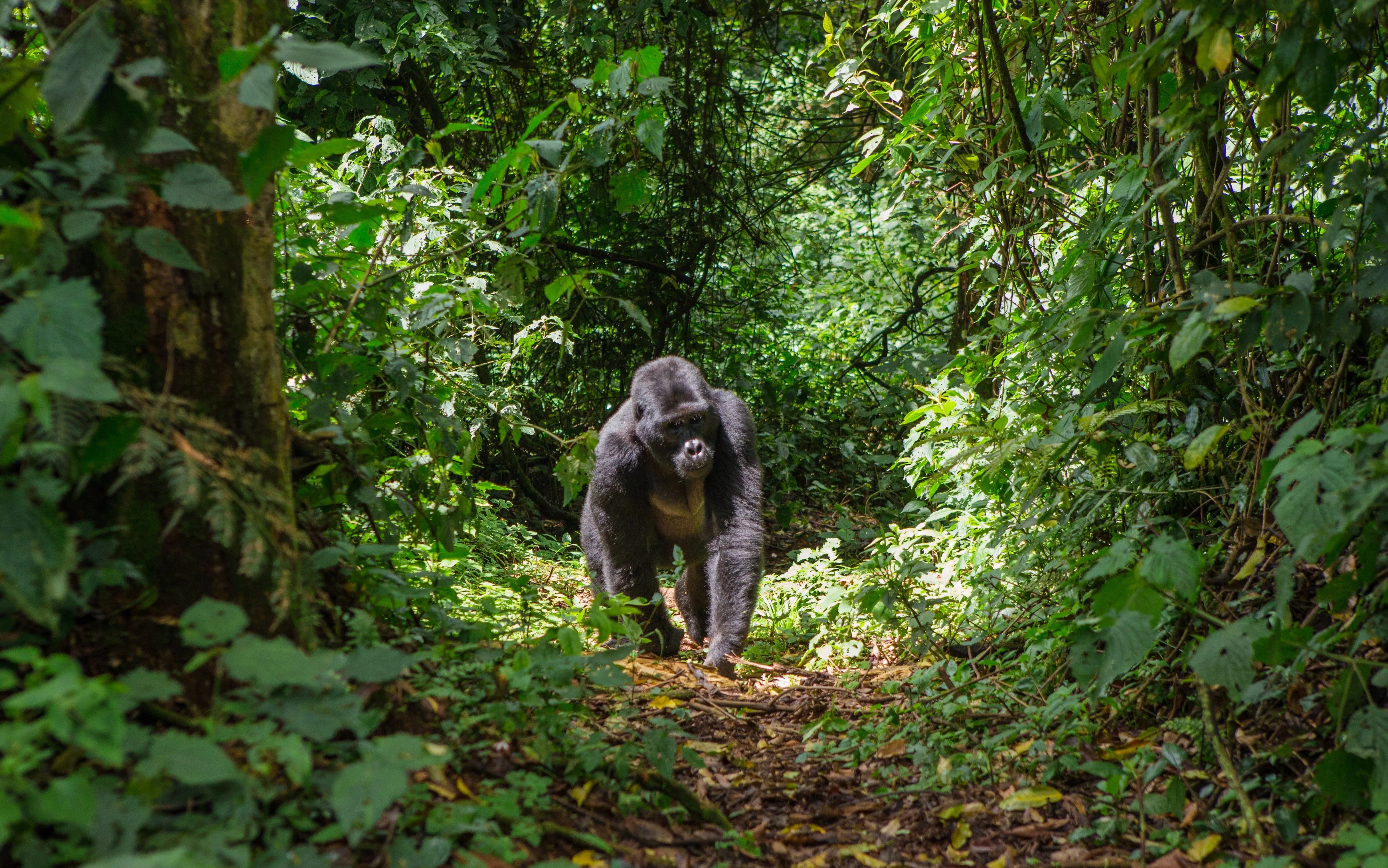
Civil unrest surrounding the mountain gorilla’s habitat has also proven challenging for the subspecies. Refugees from the Rwandan genocide in 1994 and the Democratic Republic of Congo’s civil war have encroached on the mountainous regions, and the national parks have come under pressure from refugee, rebel and military groups for decades. These groups often convert land for agriculture or mining, hunt the local wildlife, and make it impossible for conservationists to work in the same regions.
Lastly, mountain gorillas are threatened by disease. After chimpanzees and bonobos, gorillas are our closest living relatives; as such, they are susceptible to similar diseases to humans. Gorillas haven’t developed resistance to many of the diseases carried by people, so exposure to these viruses or other contagious diseases can be devastating for populations.
A conservation success story
Despite the continued threats, the mountain gorilla’s conservation story is a positive one. Not only has the decline been stabilised, but the population is actually on the rise – a first for any great ape species in the modern day. There are now around 1,000 mountain gorillas living in the wild. The success of the subspecies’ conservation can be attributed largely to the involvement of local communities and the advocacy of tourism.
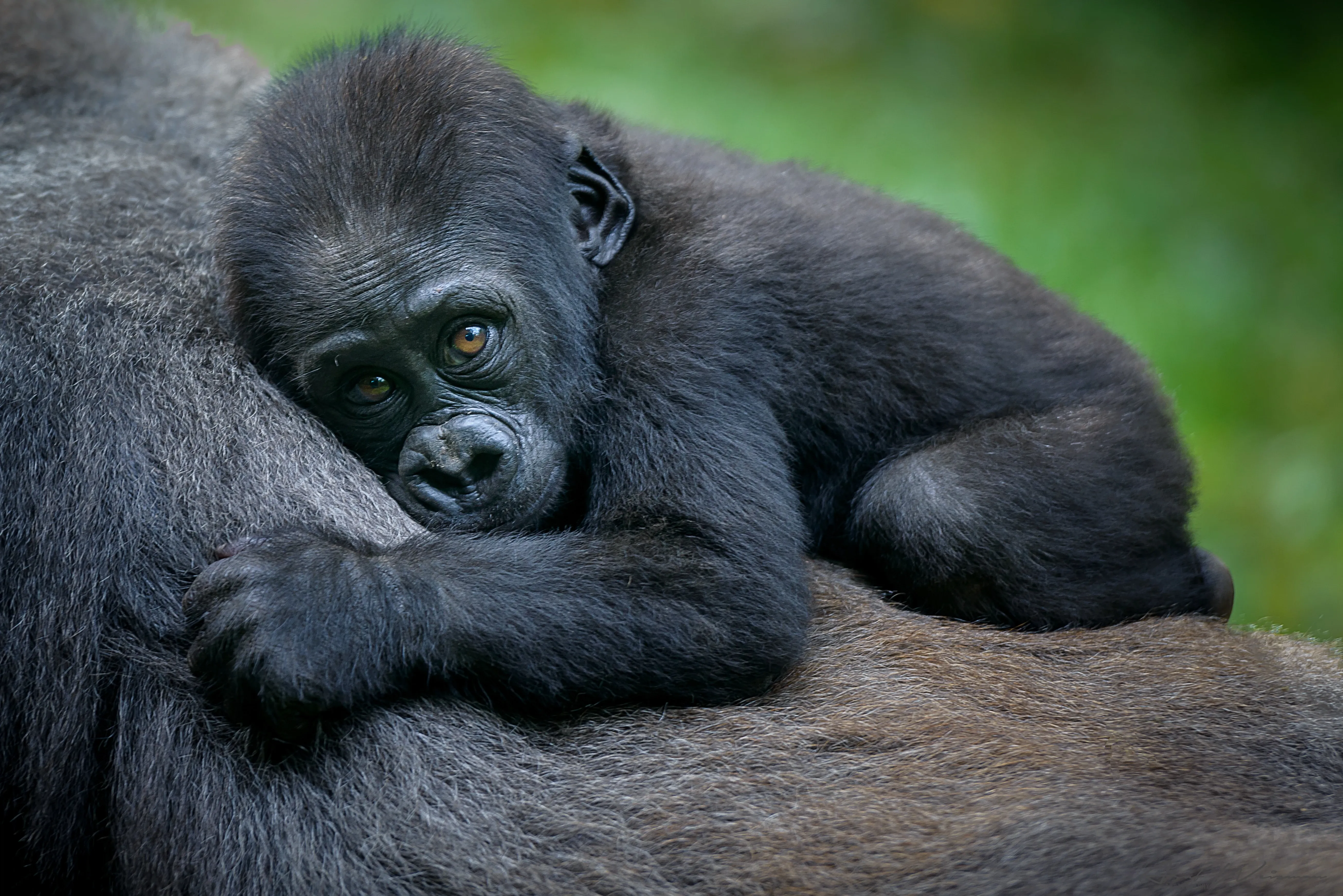
In a controversial move, ecologists worked to habituate the gorilla populations to the presence of humans, so a tour group could be taken into the forest and enthusiasts could see the animals up-close in their natural habitat. Groups of tourists are taken to visit the apes for one hour every day – a limit imposed to prevent disturbing the gorillas too much. For that hour, a group of people is taken into the forest habitat to observe the gorillas, take photographs and simply enjoy being in their company.
There are strict rules around distance. Tourists must stay 7 meters away from the gorillas (far enough away so they can’t sneeze on them!) and they aren’t to have any direct contact. Tourists pay a premium for this unique experience. Some of that money is invested back into gorilla conservation and tourist spend money with local communities while they are there, thus supporting the local economy. The presence of tourists may have other benefits too, like deterring poachers.
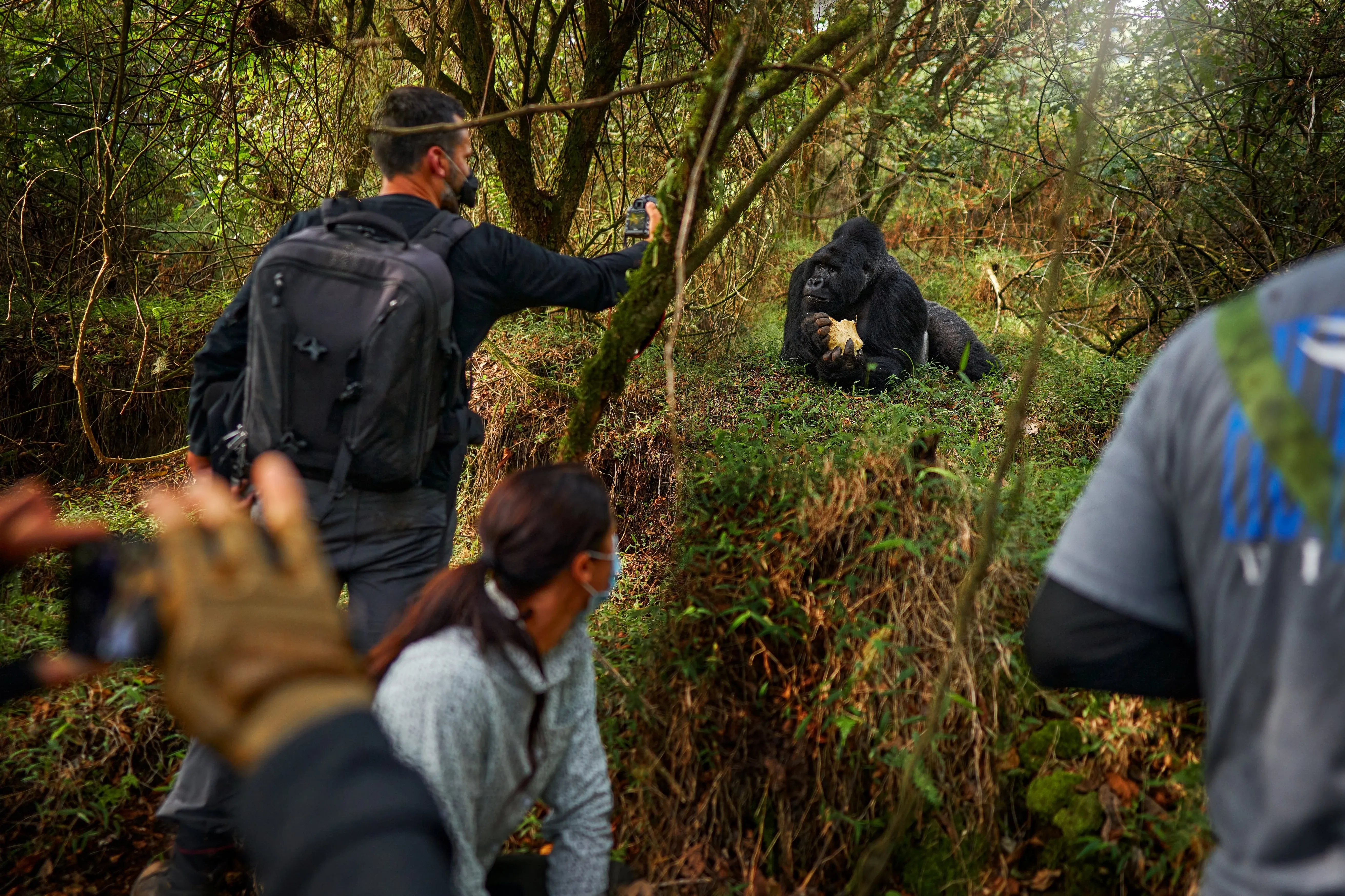
The problem with gorilla tourism
Habituating gorillas to humans does not come without risks. If gorillas are comfortable around people, they will be much more vulnerable to illegal hunters who might want to take advantage of the animals for bush meat or the pet trade – particularly if civil unrest makes it difficult for rangers to protect the animals. Habituation might also make it more likely that gorillas will roam beyond the forest and raid the crops of local communities, which has been a reason for gorillas being killed in the past. The disease risk, too, is a considerable one for the gorillas. Some gorillas have already suffered from common skin and respiratory diseases.
The benefits of gorilla tourism
Tourism has been the driving force behind the successful conservation of mountain gorillas. Money from visitors boosts the local economy and the offering has brought local communities together as protectors of their unique ape, reducing human-gorilla conflict and encouraging engagement with gorilla conservation.
As a result, threats of mining and oil exploration that were once a very real concern in the region have been quashed.
Is mountain gorilla tourism ethical?
Habituating wild gorillas to the daily presence of humans was undoubtedly a bold and controversial move, but it is impossible to argue with the numbers - mountain gorillas are, to date, at least, thriving since conservationists switched the focus to tourism. If wild animals can’t live alongside humans, there are two options: let them be persecuted, or protect them by keeping them apart. There is no perfect solution, but restricting gorillas to national parks and funding their conservation with strictly-managed tourism could be an effective solution for maintaining a critically endangered subspecies.
Does habituation affect gorilla behaviour and ecology? Probably. Does it matter? Perhaps not. We will never revert to living alongside forest ecosystems in the way we did 20,000 years ago, so conservationists have to choose the best available solution. In this case, so long as the rules are taken seriously and tourists do maintain the proper distance, mountain gorillas might be able to live comfortably in their wild habitat without human behaviour threatening their survival.
Sign up for the newsletter
By clicking on “Subscribe now” I will subscribe to the Conscious Explorer newsletter with all the information about mindful travel. Information on the success measurement included in the consent, the use of the shipping service provider MailChimp, logging of the registration and your rights of revocation can be found in our privacy policy.

